Fairy Chimneys Travel Guide: Discovering a World of Magic and Wonder
Fairy Chimneys are a natural formation that is one of the few places in the world and is located in Göreme Historical National Park in Turkey. The example of this formation in Turkey is world famous. Tourists from all over Turkey and the world flock here. Fairy Chimneys, one of the most beautiful examples of which is located in Turkey, attracts attention with its interesting landscapes made of tuff. Fairy Chimneys, which are spread over a very large area in and around Nevşehir, are also extremely impressive with their cave houses. At the same time, a visual feast is created here with balloon tours departing every morning. Fairy Chimneys are among the must-see tourist attractions for everyone.
Formation of Fairy Chimneys
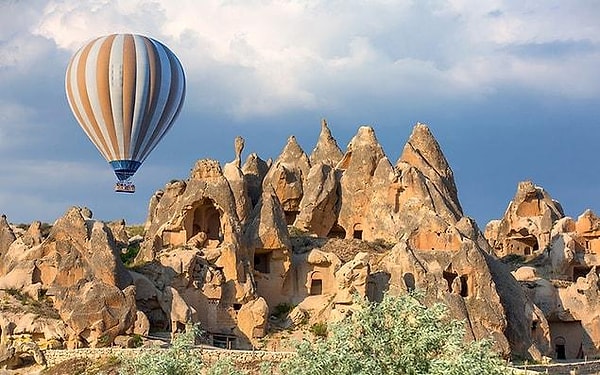
Fairy Chimneys are landforms that appear both in Turkey and around the world. The reason why this place is so well known around the world is that the ones in Turkey are spread over a very large area. This geological structure spread throughout Cappadocia has made it easier for people to build underground cities.
There are many natural factors in the formation of Fairy Chimneys. This special geography was formed by the eruptions of calderas, which are active volcanic mechanisms that took place ten million years ago. The lava from the volcanoes forms the tuff layer on the plateaus, lakes and rivers. Today's magnificent Fairy Chimneys are formed as a result of the erosion of this tuff layer by rivers, lakes and wind, especially the Kızılırmak River.
The Fairy Chimneys around Paşabağı in Cappadocia are considered to be the most prominent examples here. The fact that the examples here are conical, hat-shaped, mushroom-shaped, columnar and pointed rock forms is also an important factor.
People have also built underground cities in the Fairy Chimneys. While people used these natural formations as a place of surveillance and shelter in ancient times, they carved churches into them during the spread of Christianity. In Roman times, this place was used as a tomb.
The houses carved into the rocks here also served as shelters for Christians fleeing the oppression of the Roman Empire. In the 6th and 7th centuries, underground cities such as Derinkuyu, Kaymaklı, Mazı, Özkonak and Doğala became shelters against Arab raids.
The tradition of living inside the rocks in Cappadocia in today's sense does not date back that far. In the 19th century, the tradition of living in these natural formations developed here. There are nearly 150 underground cities in Cappadocia. While 36 of them are underground cities in today's sense, the others are small enough to accommodate a few families.
Where are the Fairy Chimneys? How to get there?
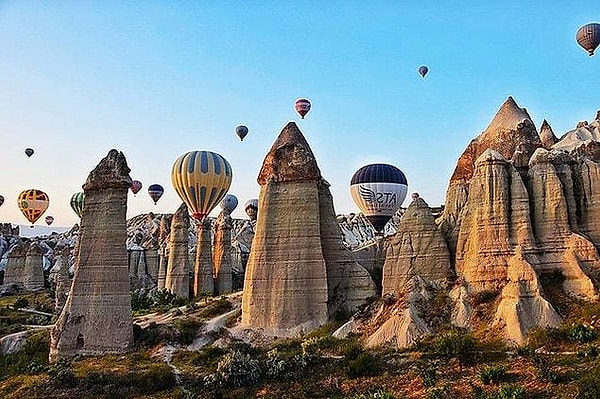
Fairy Chimneys are spread throughout Cappadocia. Located in the Ürgüp district of Nevşehir, these formations are quite easy to reach. There are flights to Tuzköy Airport in Nevsehir from certain cities in Turkey. This way you can reach the region. If you cannot find a direct flight to the region, you can also use the airport in Kayseri.
It is also possible to reach Nevsehir by road from anywhere in Turkey. After arriving in the center of Nevşehir, you can reach the Fairy Chimneys by public transportation. If you wish, you can also rent a car or take your private car.
You can reach location informations from here:
Adress: Ürgüp Nevşehir TR, 50500 Çavuşin
NOTE: These formations are spread over very large areas in Nevşehir. For this reason, there are many points where you can see Fairy Chimneys other than these addresses.
Things to do in Fairy Chimneys

When you come to Cappadocia, which is a very rich geography, there are some things you must do. Some of these are as follows:
Visit the underground cities.
Take pleasant walks in the valleys.
Take a balloon tour.
Visit the museums.
Watch the historical and natural beauties from the hills.
Take an ATV tour.
Places to see in Fairy Chimneys
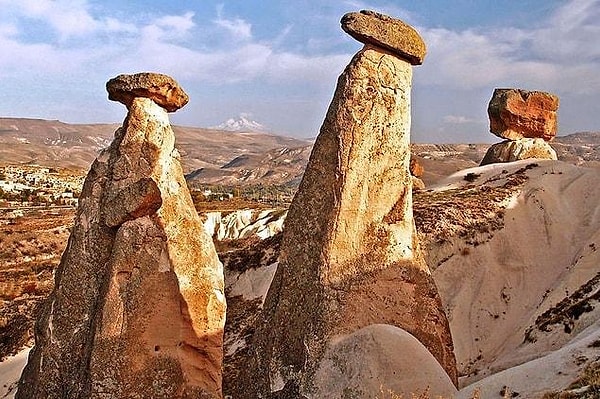
When you come to the Fairy Chimneys, there are places you should definitely visit and see. The places to visit in this region are mainly in Avanos, Çavuşin, Ürgüp, Göreme, Uçhisar and Ortahisar settlements. Some of the places you should see in these settlements are as follows:
Devrent Valley
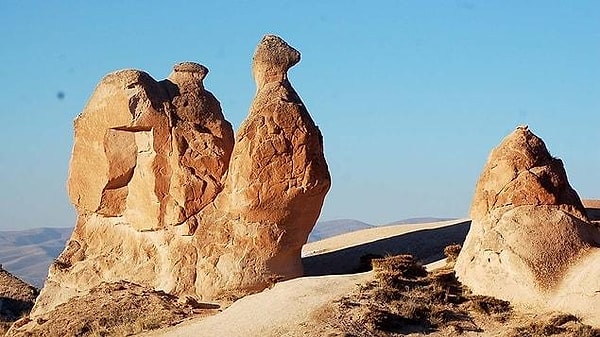
Devrent Valley in Avanos is where many TV series have been filmed and most of them have been used to promote Cappadocia. The feature of the fairy chimneys here is that they resemble animals or different objects. You can also see camels brought here by the villagers.
Adress: Ürgüp Yolu, 50500 Aktepe/Avanos/Nevşehir
Rahipler Valley
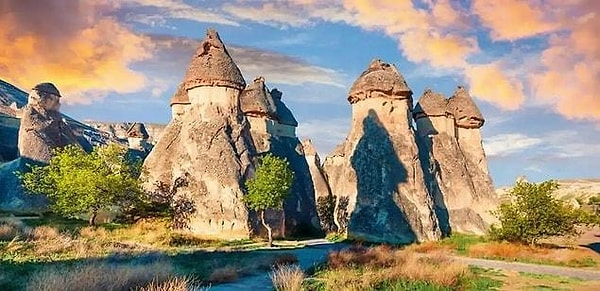
It is stated that people who preferred an isolated life during the Byzantine period lived in this valley, also known as Paşabağı. We recommend that you include the Valley of the Priests, which has a very deep-rooted history, in your trip. This place is located in Çavuşin.
Adress: Zelve Yolu, 50500 Çavuşin/Avanos/Nevşehir
Aşıklar Valley

The reason why it is called the valley of love is that marriage proposals are made very often in this valley. When you come here, you should also go to the viewing section called Lovers Hill. You can catch the most beautiful views in Cappadocia in this valley.
Adress: 50180 Göreme/Nevşehir Merkez/Nevşehir
Uçhisar Castle
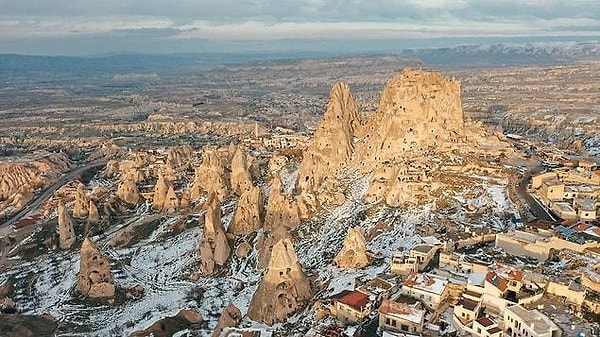
You should definitely climb Uchisar Castle, the highest fairy chimney that can be seen from all over the region. It is also possible to watch balloon flights here.
Adress: Tekelli, 50240 Uçhisar/Nevşehir Merkez/Nevşehir
Three Graces
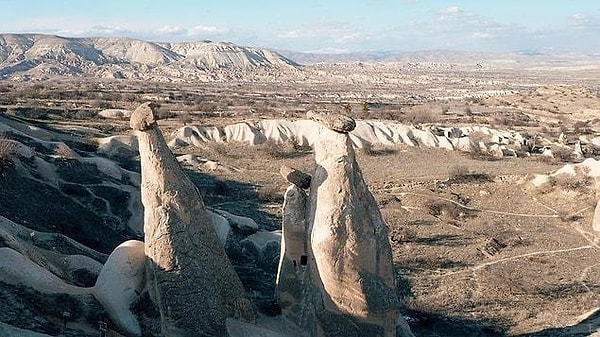
The three fairy chimneys here have become the symbol of Cappadocia. Many tourists who come to Cappadocia usually have this place in the background of their photos. The Three Graces, which is also the subject of stories, is one of the most important places for your Cappadocia trip.
Adress: Esbelli, Nevşehir Ürgüp Yolu, 50400 Ürgüp/Nevşehir
Underground Cities in Cappadocia

Cappadocia is full of underground cities. The underground cities you should definitely see here are as follows:
Derinkuyu Underground City
Ozkonak Underground City
Thuja Underground City
Kaymakli Underground City
Tatlarin Underground City
What to eat n the region?

What you eat during your vacation is also very important. Here are the flavors you should not return without tasting when you come here:
Testi Kebab
Pumpkin Seed Noodles
Leaf Wrap
Urgup Meatball
Kayseri and Nevsehir Dumplings
Wedding Soup
Dry Cream
Dolaz
Köftür
Chickpea Stew
Stuffed Quince
Zerdeli Pilaf
Zerde
Aside
Apricot Stew
Gendirme
Fairy Chimney Restaurants

When you come to the Fairy Chimneys, here is the list of restaurants that you should definitely stop by and taste the above flavors:
Millocal Restaurant Kapadokya
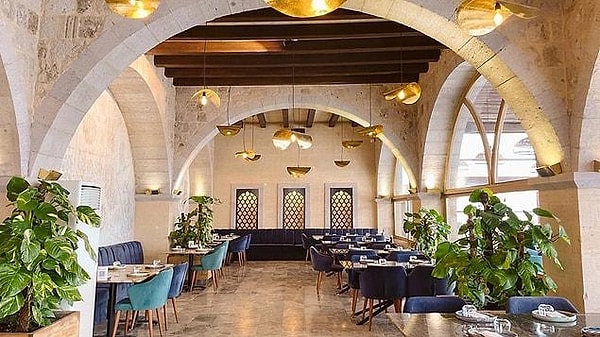
This is one of the most preferred restaurants in Cappadocia. You should definitely go to Millocal, one of the highest rated restaurants in terms of service, presentation and view.
Adress: Tekelli Mah. Karlık Sok. No:30 Uçhisar, 50240
Seki Restaurant-Lounge-Cellar

Seki Restaurant-Lounge-Cellar is another must-visit restaurant in Cappadocia. If you are looking for quality service and delicious food, you should definitely stop by here.
Adress: Aşağı Mah, Argos in Cappadocia, Kayabaş Sk. No:36, 50240 Uçhisar/Nevşehir Merkez/Nevşehir
House of Memories
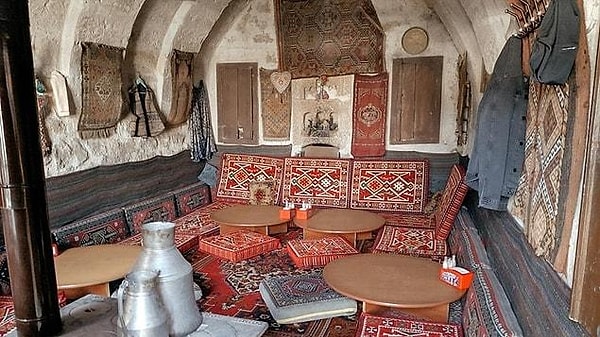
House of Memories is one of the first restaurants that comes to mind when it comes to testi kebab in Cappadocia. If you want to eat in a more authentic environment, you can choose this place.
Adress: Tekelli, Hacı Alibey Cd. No:2, 50240 Uçhisar/Nevşehir Merkez/Nevşehir
Best Hotels Near Fairy Chimneys

When you come to the Fairy Chimneys, you need a few days to fully visit this place. For an in-depth vacation, you should choose accommodation facilities. Here are a few of the best hotels you can stay in when you come to the Fairy Chimneys:
Argos in Cappadocia
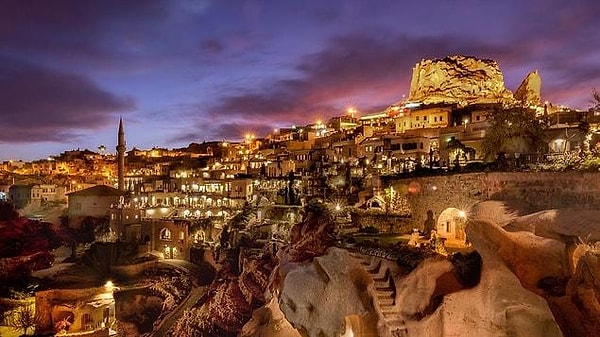
Located in Uchisar, on the site of a thousand-year-old monastery, this is one of the best and most scenic hotels around Cappadocia. It is made up of mansions connected by underground tunnels dug by the hands of the people who once lived here.
Adress: Aşağı, Kayabaş Sk. No:23, 50240 Uçhisar/Nevşehir Merkez/Nevşehir
Museum Hotel
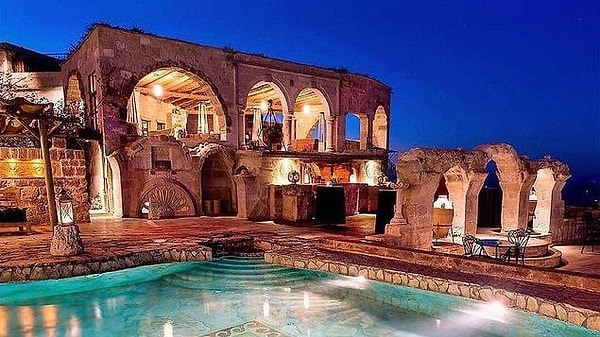
With its beautiful antiques and design, this hotel is one of the most preferred hotels in Cappadocia. Instagram celebrities are also frequent visitors.
Adress: Tekeli mah. Eski, Göreme Cd. No.1, 50240 Nevşehir
Keşfet ile ziyaret ettiğin tüm kategorileri tek akışta gör!


Send Comment